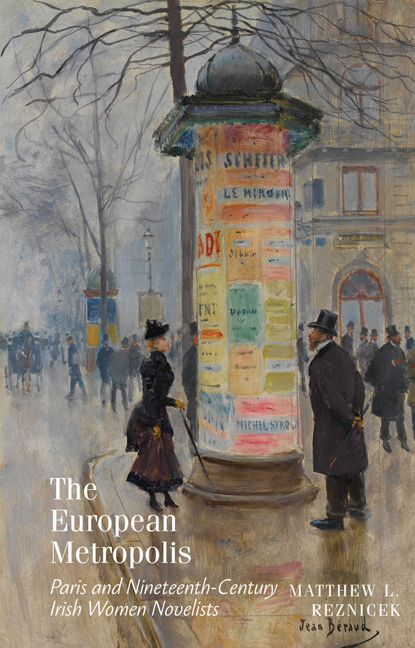Book contents
- Frontmatter
- Contents
- Acknowledgments
- Dedication
- Parvenir: An Introduction
- The Novice in the City: Sydney Owenson and the Bildung of Metropolitan Economics
- Much More than Only Le Bel Irlandois: Metropolitan Socioeconomics and Parisian Bildung in Maria Edgeworth's Ormond
- The New Jerusalem and the Rue Vavin: Urban Space, Economic Exchange, and Gendered Modernity in French Leave
- First Life-and then Fame: Gendered Fin-de-Siècle Cityscapes in Max
- A City She Must Postpone: A Conclusion
- Notes
- Works Cited
- Index
First Life-and then Fame: Gendered Fin-de-Siècle Cityscapes in Max
- Frontmatter
- Contents
- Acknowledgments
- Dedication
- Parvenir: An Introduction
- The Novice in the City: Sydney Owenson and the Bildung of Metropolitan Economics
- Much More than Only Le Bel Irlandois: Metropolitan Socioeconomics and Parisian Bildung in Maria Edgeworth's Ormond
- The New Jerusalem and the Rue Vavin: Urban Space, Economic Exchange, and Gendered Modernity in French Leave
- First Life-and then Fame: Gendered Fin-de-Siècle Cityscapes in Max
- A City She Must Postpone: A Conclusion
- Notes
- Works Cited
- Index
Summary
It was well said of a certain German book that “er lasst sich nicht lesen”—it does not permit itself to be read. There are some secrets which do not permit themselves to be told.
—Edgar Allen Poe, “The Man of the Crowd”Originally published in 1840, seventy years before Katherine Cecil Thurston's Max, Edgar Allen Poe's “The Man of the Crowd” highlights the anxieties that emerge around the illegibility of the modern city, which nightly presents “the hideousness of mysteries which will not suffer themselves to be revealed.” The menacing figure of Poe's tale embodies the modern cityscape by refusing to be revealed, by withholding permission to be read. While Poe's tale sets out a recognizably Gothic vision of London's heterogeneous and thronging crowd, Julie Abraham argues that Honoré de Balzac's La Fille aux yeux d'or (The Girl with the Golden Eyes, 1835) establishes the terms that will dominate attempts to read the nature of the modern metropolitan landscape. In his attempt to lay out the “cadaverous physiognomy” of Paris, Balzac turns to “[a] few remarks on the Parisian” that depict the French capital in hellish terms which recall Dante's Inferno. Just as Poe relates his attempt to read the modern cityscape to the act of reading its citizens, Balzac connects the landscape of Paris, where “smoke billows, fires roar, everything flashes, boils, burns, and evaporates, everything is extinguished and rekindled, everything sparkles, glitters, and is itself consumed,” to an attempt to read the infernal physiognomy of the Parisians themselves and their “twisted, contorted faces [which] exude from every pore the thoughts, desires, and poisons which bloat their minds.” Indeed, Poe's narrative ends because physiognomy fails to provide an accurate reading of the metropolitan figure; similarly, Balzac's narrator admits that the faces he is attempting to read “are not faces but masks, masks of weakness or strength, masks of misery, joy, or hypocrisy, each one drained and marked with the indelible signs of breathless greed.”
- Type
- Chapter
- Information
- The European MetropolisParis and Nineteenth-Century Irish Women Novelists, pp. 139 - 180Publisher: Liverpool University PressPrint publication year: 2017



